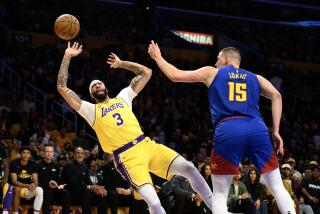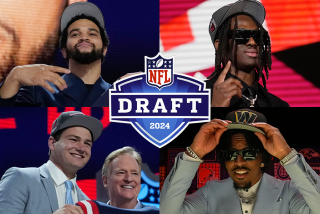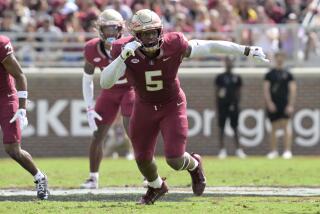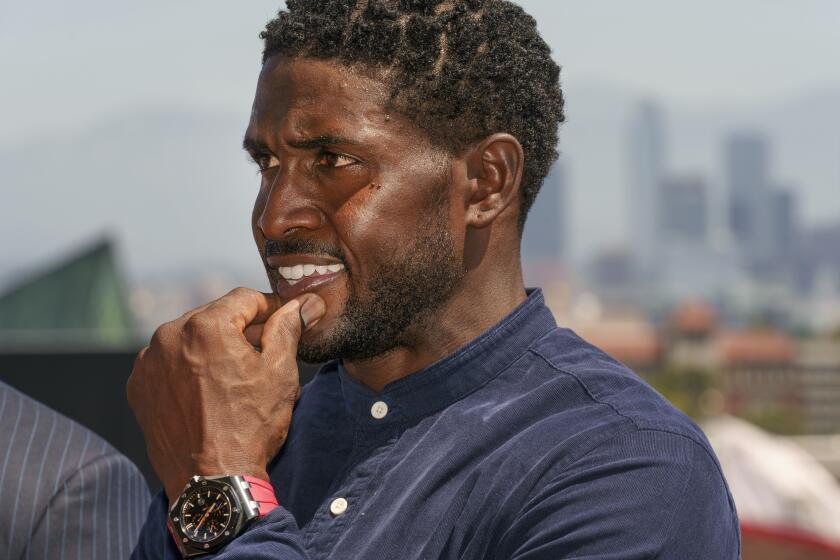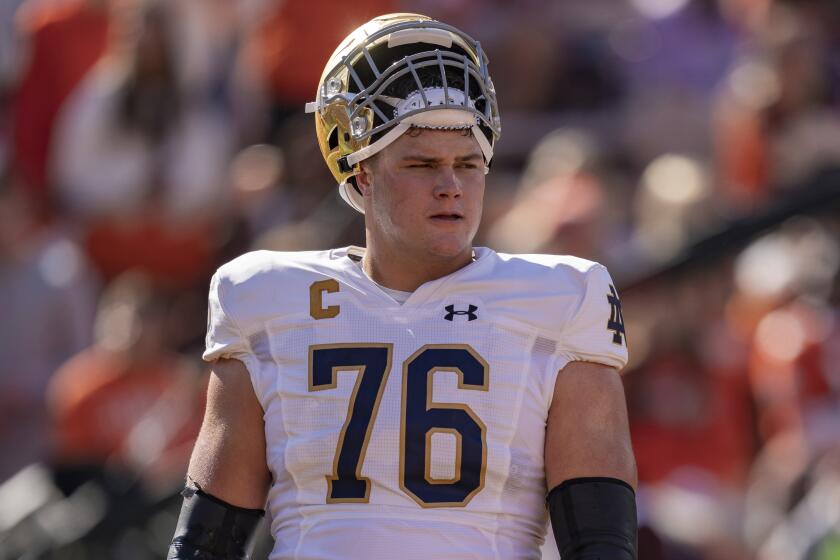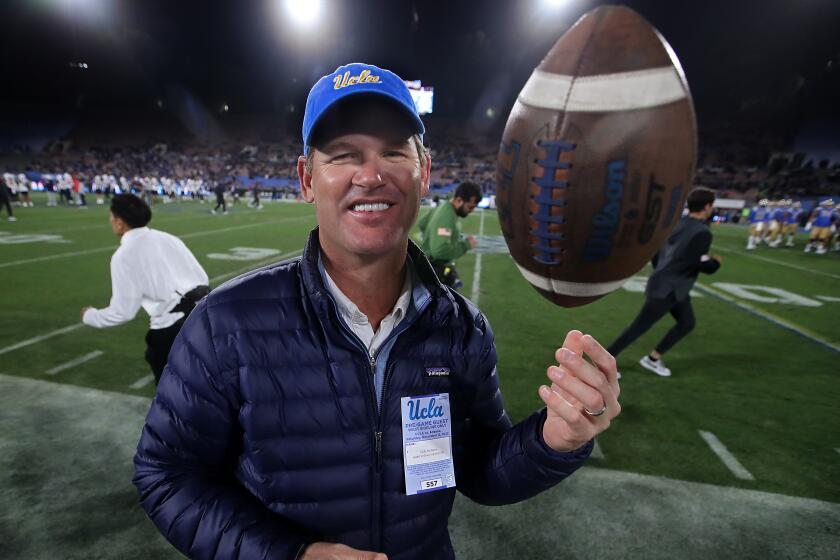Column: Dodgers failing isn’t a surprise

Dodgers pitcher Clayton Kershaw walks back to the mound as Cubs catcher Willson Contreras rounds the bases after his solo home run in the fourth inning of Game 6.
The Dodgers were two wins – only two measly wins – from the World Series.
Except it really wasn’t that close.
What became clear over the six games of the National League Championship Series was how the Chicago Cubs were the clearly superior team.
The Cubs had more firepower in their lineup.
They had more quality arms in their rotation.
That was demonstrated in their victories in Games 4, 5 and 6, in which they outscored the Dodgers by a combined score of 23-6.
“The better team won the series,” Dodgers Manager Dave Roberts conceded.
The magic that carried the Dodgers to this point couldn’t overcome the talent of the 103-win Cubs, as Roberts’ strategic audacity and veteran second baseman Chase Utley’s contagious determination couldn’t make up the deficiencies of the roster assembled by Andrew Friedman.
As highly-regarded as Friedman remains in the industry, the reality is that he hasn’t come any closer to reaching the World Series than his predecessor, Ned Colletti.
This wasn’t a surprise. As far back as spring training, some of the players were asking why Friedman and his new-age front office hadn’t done more to fortify the roster, particularly the rotation.
The Dodgers had the best pitcher in the world in Clayton Kershaw.
Then what?
Behind Kershaw were Brett Anderson, Brandon McCarthy, Scott Kazmir and Hyun-Jin Ryu, all pitchers with thick medical files that forecasted the trouble that was about to come.
One by one, they went down. The Dodgers continued to thrive in their absence, which might have created a false sense of security for the team’s decision makers. Their only major pitching acquistion at the non-waiver trade deadline was Rich Hill.
Teams like the San Diego Padres and Arizona Diamondbacks can be taken down with a patchwork rotation. The problem is that teams like the Padres and Diamondbacks don’t qualify for the postseason.
Kenta Maeda is a perfectly adequate back-of-the-rotation pitcher, but he shouldn’t be the No. 3 starter on any team with World Series aspirations. Julio Urias has a promising future, but anyone counting on a 20-year-old kid in Game 4 of an NLCS is asking for trouble.
Superhuman efforts by Kershaw and closer Kenley Jansen were required for the Dodgers to defeat the Washington Nationals in the NL division series. Kershaw, who missed 10 weeks of the regular season with a back injury, started Game 1, again in Game 4 on three-days’ rest, and pitched in relief in Game 5.
“We’ve asked a lot of Clayton all year long,” Roberts said.
Kershaw returned to win Game 2 of the NLCS, but looked as if he was out of gas Saturday. Kershaw was charged with five runs (four earned) and seven hits. He threw more pitches in five innings (93) than Cubs starter Kyle Hendricks did in 7 1/3 (88).
Any wonder why?
What made this especially maddening was that it was the result of the Dodgers allowing history to repeat itself.
The Dodgers had a similar problem with their rotation last year, the byproduct of the same misguided idea that an affordable-but-stable rotation could be built on around injury-prone pitchers. They went into the postseason last October with a rotation that had a major dropoff after Kershaw and Zack Greinke. This year, they had Kershaw, Hill and nothing else.
The shortage of quality in their rotation also affected the team’s relievers, who were asked to shoulder an abnormally heavy burden in the regular season. Right-hander Joe Blanton was one of the team’s anonymous heroes, posting a 2.48 earned-run average in 75 games to establish himself as the team’s primary setup man.
A starting pitcher as recently as three years ago, Blanton was clearly fatigued by the NLCS. He uncharacteristically allowed a critical home run in Game 1 and again in Game 5.
Jansen’s willingness to pitch multiple innings made up for the bullpen’s exhaustion, but only so much. With Blanton no longer pitching like Blanton, Roberts had to stay with Kershaw through five innings Saturday, even though it was clear it wasn’t his night.
When Jansen entered the game in the sixth inning, the Dodgers were already down by five runs.
The off-season could create more problems. Jansen and Blanton will be free agents. So will third baseman Justin Turner, the team’s most consistent hitter.
With their last 10 playoff appearances falling short of the World Series, the Dodgers have established a new major league standard for postseason futility. And if they don’t address their problems, they will be adding to their record mark next year.
Follow Dylan Hernandez on Twitter @dylanohernandez
More to Read
Get our high school sports newsletter
Prep Rally is devoted to the SoCal high school sports experience, bringing you scores, stories and a behind-the-scenes look at what makes prep sports so popular.
You may occasionally receive promotional content from the Los Angeles Times.
